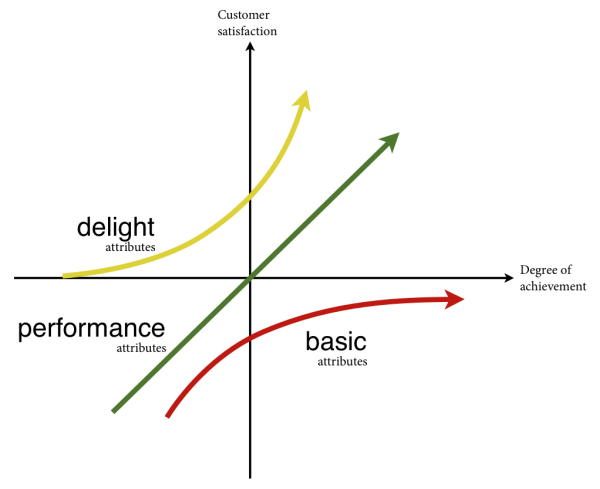Monitoring customer satisfaction for beginners
How certain are you that you know what your customers want, need and demand from the service you provide? If you were to ask your customers today if they’d come back to you, how many would say yes and not jump ship?
We now live in a new world of ecommerce, social media, apps, far-flung call centres and virtual organisations, however the importance of customer satisfaction remains the same. It still translates into rave reviews, repeat business and growth.
Customer satisfaction doesn’t just refer to satisfaction with a product they purchased but also with the service and support attached to it. So how can you turn your customers into loyal customers who rave about their experience with your company? In this post we’ll look at how you can monitor and measure customer satisfaction and how you can use their feedback to invest more wisely in customer experience improvements.
Understanding customer expectations
You will never be able to offer customers an enjoyable experience if you don’t know what their expectations are when it comes to your business and your offering. Start by doing your homework and discover what it is exactly that customers expect from you in terms of both products and service, as it’s the only way you can ensure you’re meeting their needs.
But how can you determine what delights customers or what their basic needs are? Use the Kano model developed by Professor Noriaki Kano of Tokyo Rika University, and his colleagues. The model assumes three different attribute types – basic, performance, and delight – which collectively constitute the customer experience of your product.
Basic needs (or dissatisfiers) are basic features or characteristics of a product or service that customers expect to find. These needs are typically “unspoken” and if they’re not met, it results in customers’ dissatisfaction. For example, an “unspoken” need when staying at a hotel is cleanliness. When you book a room at a hotel, you don’t request “a clean room”. You expect it to be clean.
Performance needs (or satisfiers) are features or characteristics that increase or decrease satisfaction such as cost/price, ease of use, speed etc. Unlike basic needs, performance needs are spoken. For example, when booking a hotel a “spoken” need could be access to internet, room service, access to a gym.
Excitement needs (or delighters) refer to the unexpected, when you delight customers by over-delivering or doing something out of the ordinary that impresses them. These needs are usually “unspoken”. For example, when you book a hotel room, you find that there’s a Nespresso machine with free capsules in your room so you can make coffee whenever you want.
So the degree of customer satisfaction is determined by the extent to which the delivered product or service is perceived by the customer to meet or exceed expectations. It’s important to make the distinction between your personal view of the quality of the product or service you deliver and the customer’s perception on it, as it’s the latter that governs the customer’s satisfaction.
What do your customers think about you?
How many times have you been asked for your feedback on a product purchase or customer service experience this week? It’s like you can’t visit a website these days without being asked for your opinion or suggestions on improvement.
- “Was this information useful?”
- “Do you like our new website?”
- “How would you rate our customer service?”
- “Did our product help you achieve your goals?
- “How often do you use our services?
- “Would you buy from us again?”
These are just a few of the questions we’re bombarded with on a daily basis and that’s because feedback is so important to business owners. How else could Booking.com know if their site is making it easy for people to make a reservation, write a review or get a refund? Customers drive so many industries and services that understanding what they think, need and want is vital to the success of any business.
So how can you encourage customers to engage with you, find out what they think about you and, as a result, help you to be a better business, one that meets or even exceeds their expectations?
Customer feedback is the best mechanism you can use to understand if you’re meeting customer expectations and if you’re delivering the standard of service that would turn them into loyal customers. Whether customers are satisfied or not, the information you collect will help you to accurately assess what is working and what isn’t and needs improvements.
So this feedback you’re asking your customers to provide shouldn’t be a general one on their overall experience. It needs to be more specific so you can find out:
- If the products or services they purchased met their expectations in terms of quality, dependability, features, aesthetics, safety, etc.
- If the delivery was done in a timely manner.
- If their interaction with the sales or support team was pleasant. Was the interaction friendly, competent, speedy?
Using online surveys to gather and monitor customer satisfaction
There are many ways to gather customer feedback and monitor their satisfaction and the most popular one is the survey. An effective customer satisfaction survey has five to ten questions that relate to the service delivery, customer experience and overall satisfaction.
Unless customers contact you because they’re unhappy for some reason, the only way to get valuable customer feedback is to send them a survey via email.
Here are a few questions you need to ask yourself before creating the survey:
1. What do you want to find out? What are your goals? Spend some time deciding what exactly it is that you want to learn from the survey as this will make it easier for you to construct your questions and organise the survey. Do you want to find out what customers think about your products or maybe about your customer service? Whatever it is, make sure every question you include in your survey is meaningful and remove those questions that are irrelevant and don’t work towards your goal.
2. How will you make sure people pay attention to it? You can send it via email as it’s the most practical channel, however keep in mind that the chances of your email being ignored are high. So to encourage people to open your email and fill out the survey you can attach a prize or an incentive. You can also try working on an enticing subject line like: “How would you like to receive a five star technical support?”. In the body of the email you can then explain how important their feedback is to improving the quality of the technical support you provide.
3. What other channels can you use? If email isn’t working to promote your surveys, you can also try using social networks to engage customers or create pop-up surveys directly on your website.
Now, here are five quick tips to help you create a better survey:
- Explain quickly in the beginning of the email what you want them to do, how long it will take to complete it and what you will do with the data.
- Use a variety of questions and answer formats (free text, yes/no, check all that apply, etc.) to keep the questions fresh and make your respondents read the questions more carefully.
- Pay attention to how many questions you are asking. Only ask questions to which you really want to know the answers. People’s time is precious so make sure that every question (and response) is meaningful.
- Don’t write questions that are ambiguous. Make them as specific and targeted as possible.
- Include at least a few open-ended questions. They allow for broader feedback you may have left out of your survey.
There are many online survey tools you can use to create and design your customer satisfaction survey such as SurveyMonkey, SurveyGizmo or Google Forms (this one is free). And if you’re struggling for ideas make sure you check out SurveyMonkey’s and QuestionPro’s collections of survey templates.
Other ways to monitor customer satisfaction
Social networks
Make sure you always stay on top of your social media accounts as all brands are vulnerable to customers expressing what they really think on Facebook, Twitter, Instagram. You should have resources dedicated exclusively to monitoring customers’ ever-shifting voice on social networks and respond, appease and even counter when needed. You can either be social, as most of your customers and competitors are, or be ostracised. Keep in mind that a connected customer is an engaged customer which can be a prized asset with which a business can converse to their advantage.
Search
Don’t stop there as even if you’re a local business, you’re performing on one world stage. Everything about your business is just a Google, Bing, Ask or Yelp away. People comment and write reviews about your business everywhere on the web so make sure you’re always monitoring these mentions as well.
Use feedback to improve your business
Don’t forget to use your customers’ feedback, whether positive or negative, to improve your business. Even when you receive complaints, view them as opportunities to understand customers’ issues and discuss ways in which you can improve your services so next time you can deliver a service that matches their expectations.
It can also be a good idea to share with your customers the improvements that you’ve made based on their feedback. For example, you can say “X percent told us that it took too long to place an order on our site. We’ve taken this on board and made changes x, y, z to the ordering process. Now it only takes 30 seconds to place an order instead of three minutes.” This proves that you value their feedback and are happy to make changes in order to provide them with a better experience. Plus, it will also make them more likely to fill out future surveys knowing that you listen and care about what they have to say.
Customer satisfaction is attainable
Customer satisfaction should drive everything you do, from the range of products and services you provide to the way you engage on social networks, answer the phone or respond to an email.
Think about it – competition is fierce, and no longer when it comes to price but when it comes to keeping customers happy and satisfied. Good service is no longer acceptable, what customers want and expect is exceptional service with them at the heart of everything you do.
Keep monitoring customer satisfaction so that the next time you ask “Would you recommend us to a friend or colleague?” the answer is Yes.
How about you? How are you monitoring and measuring customer satisfaction?




